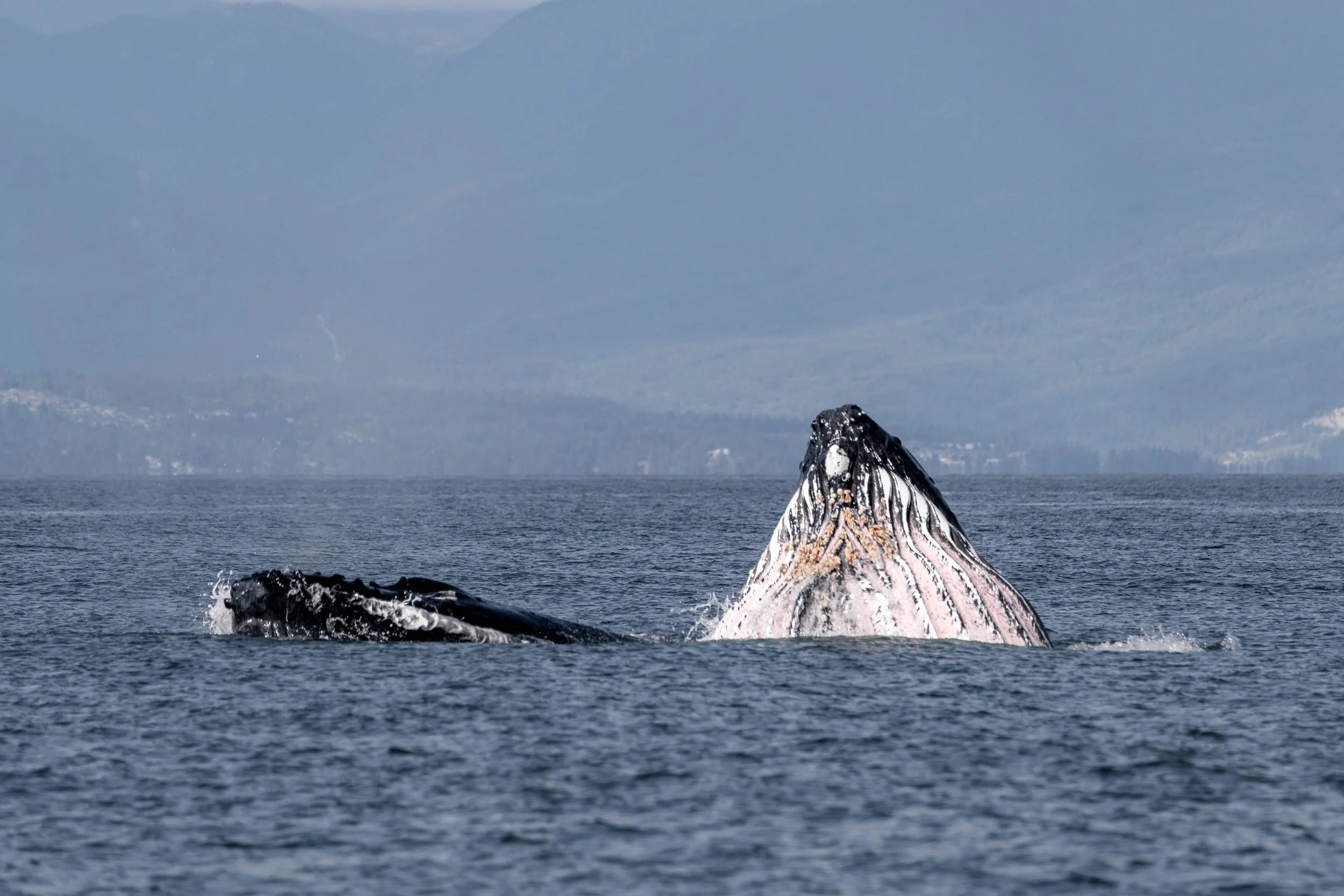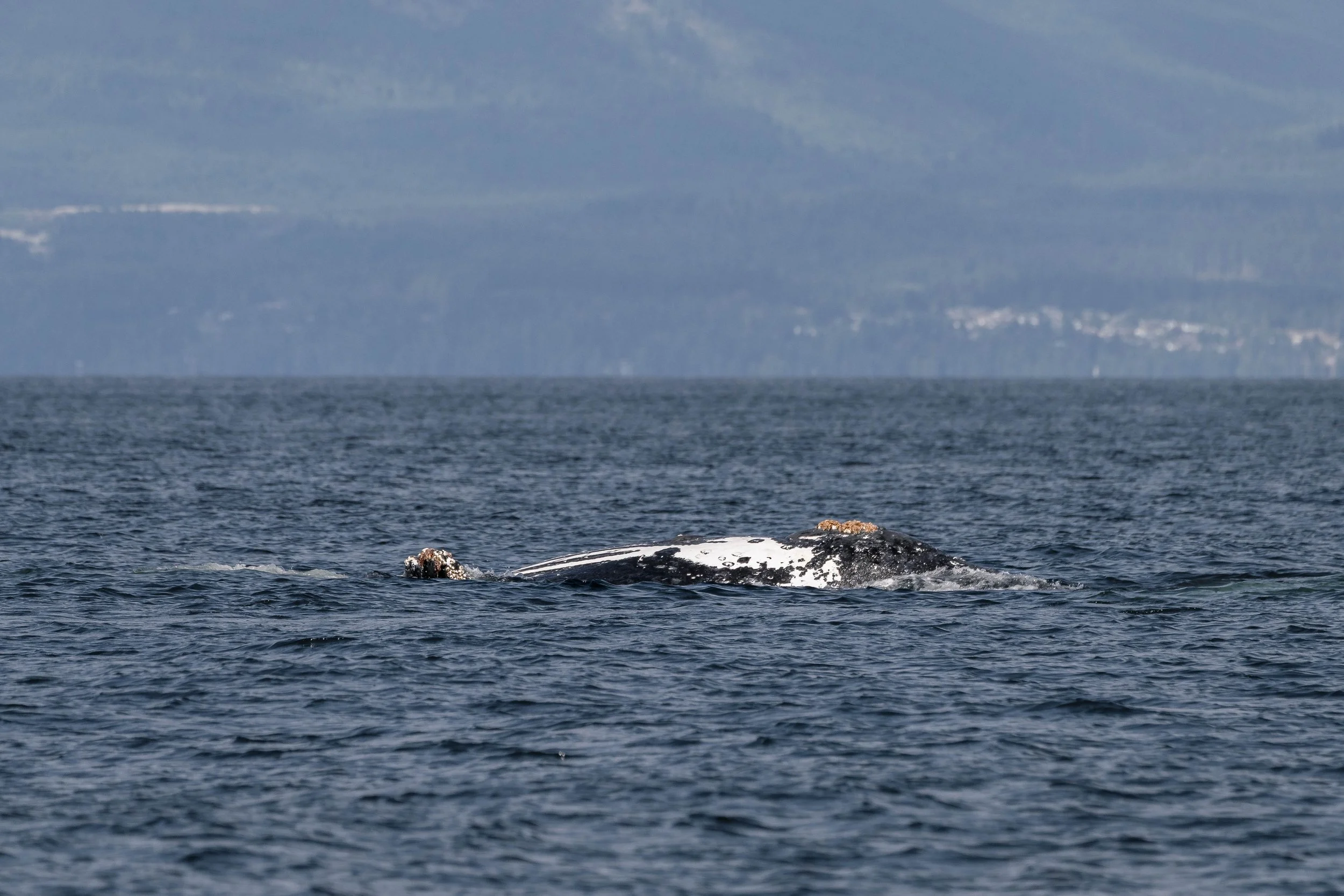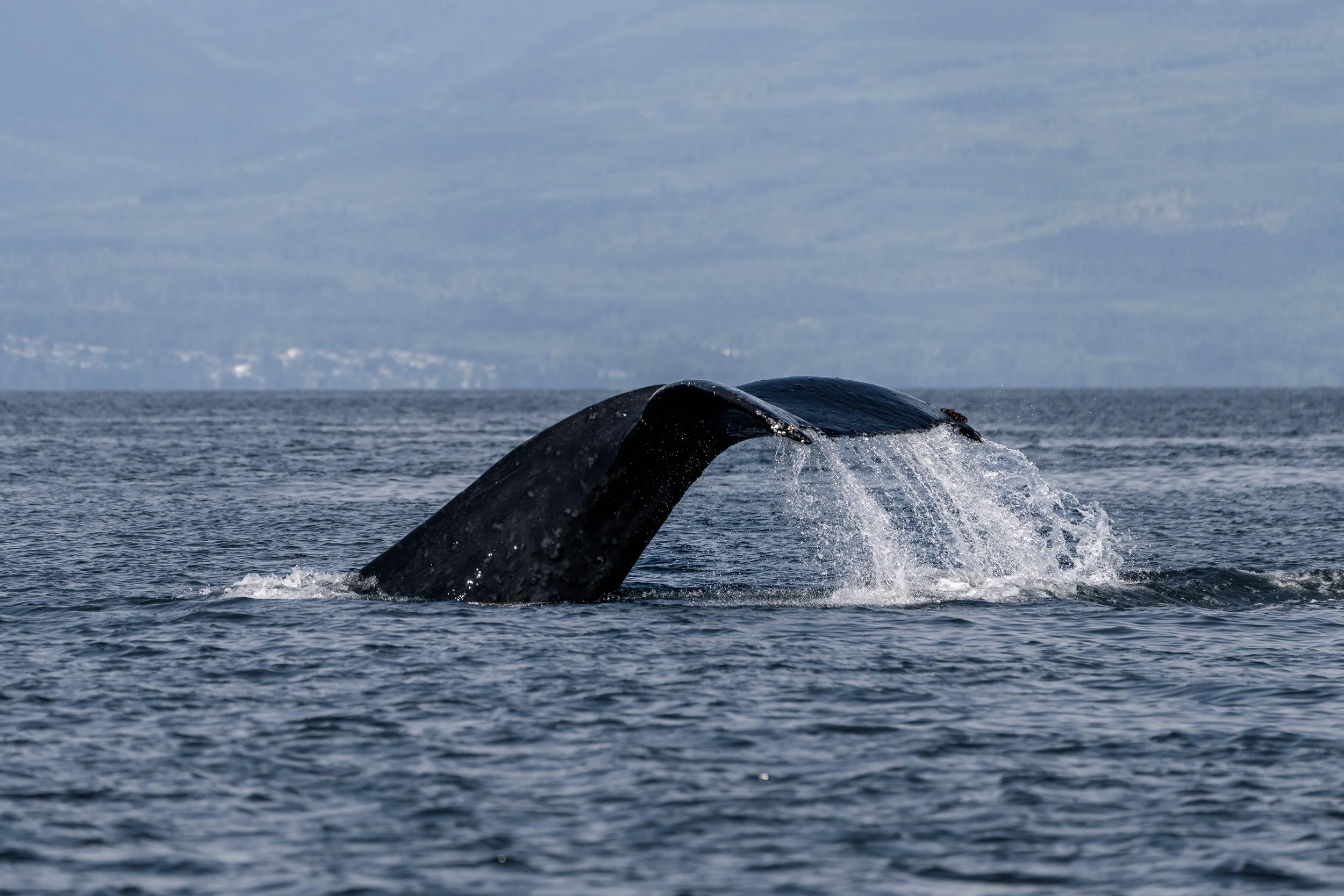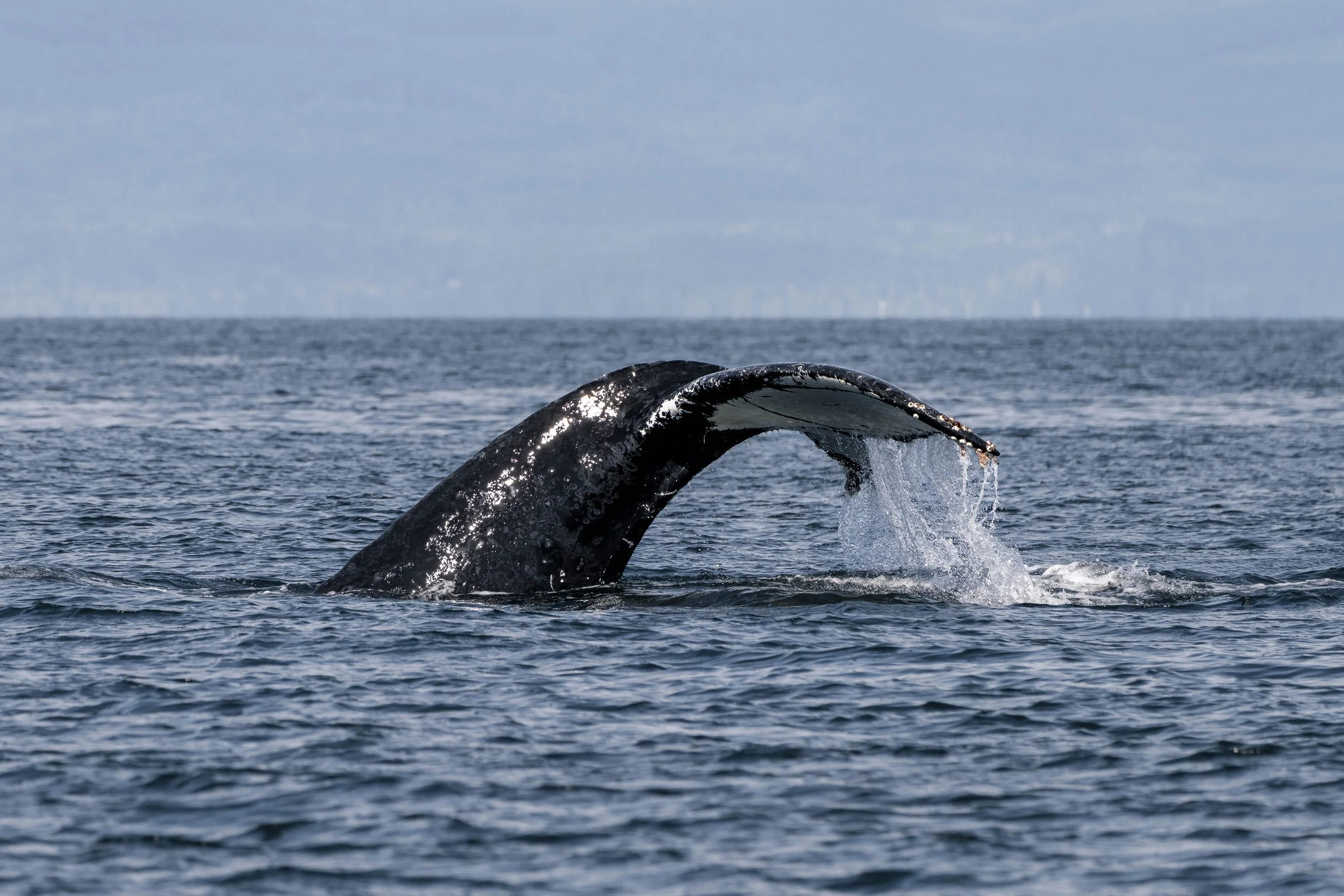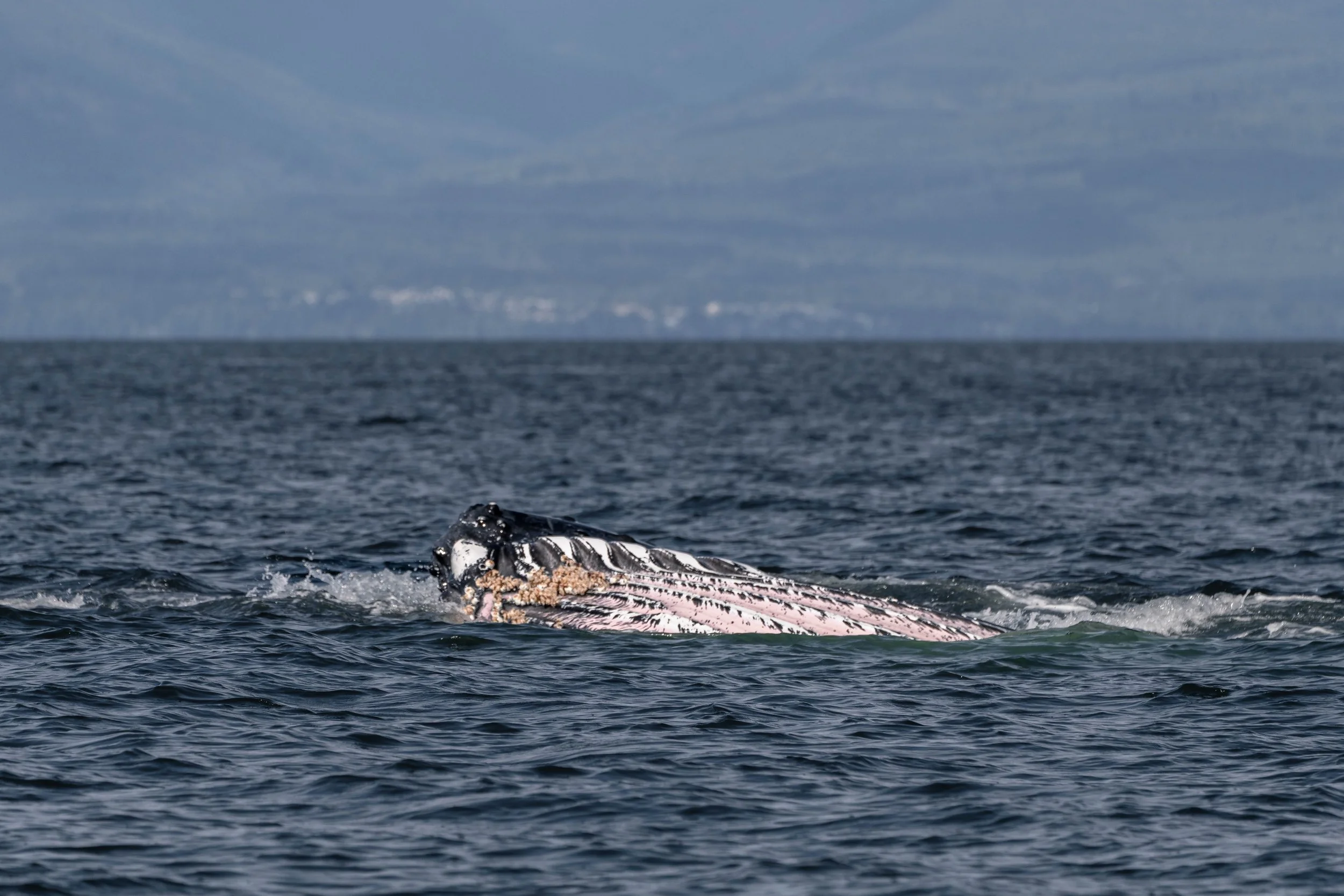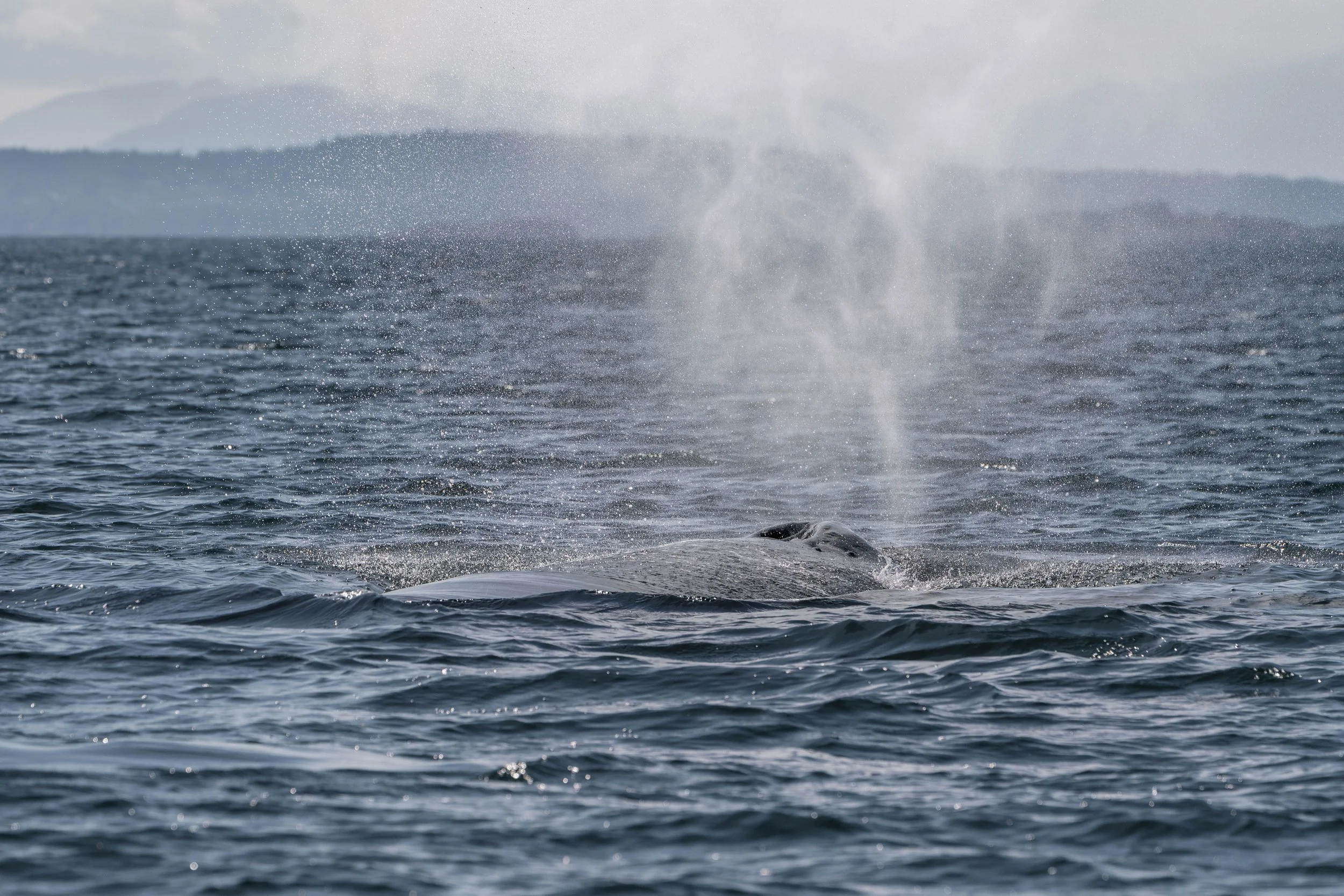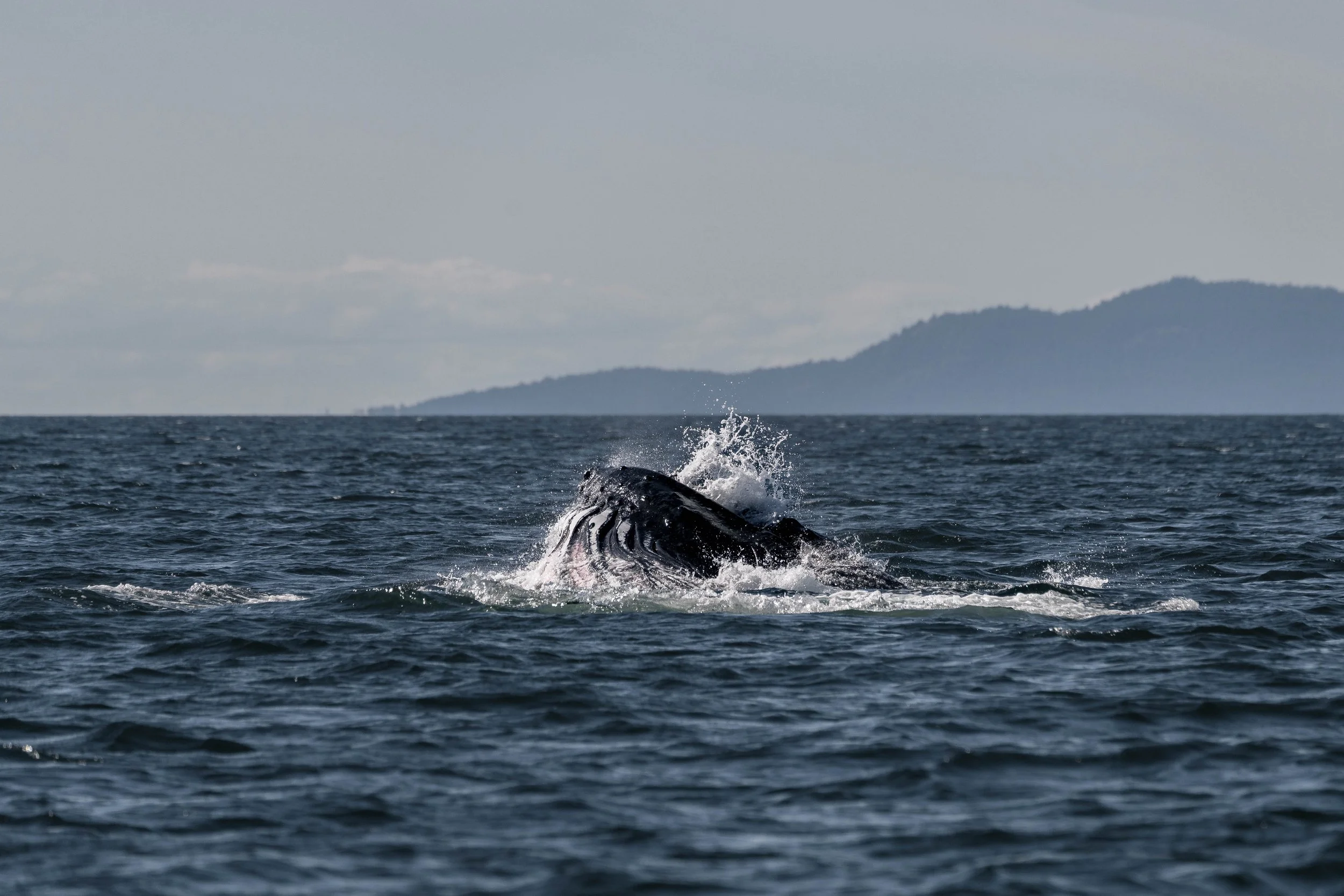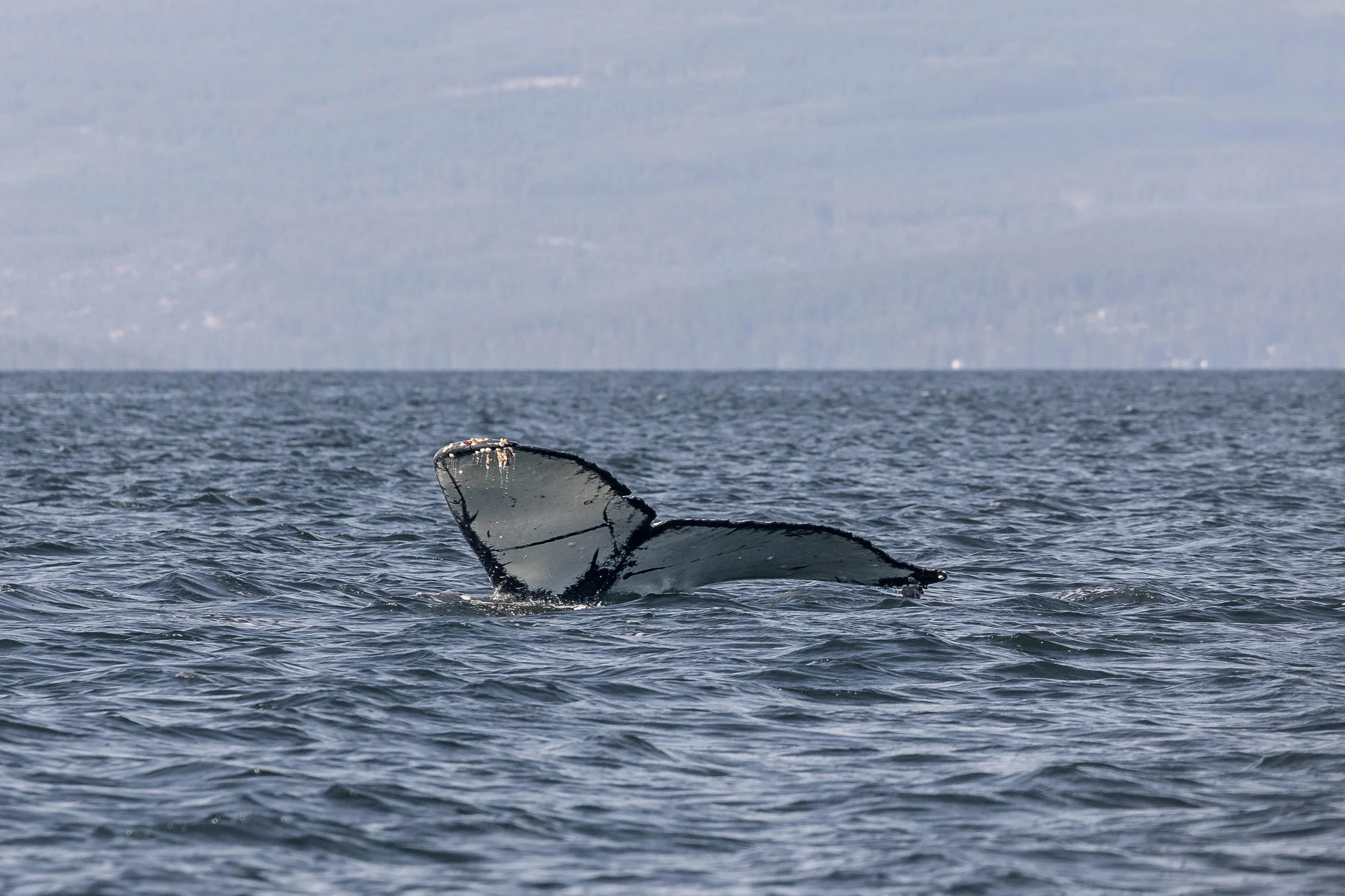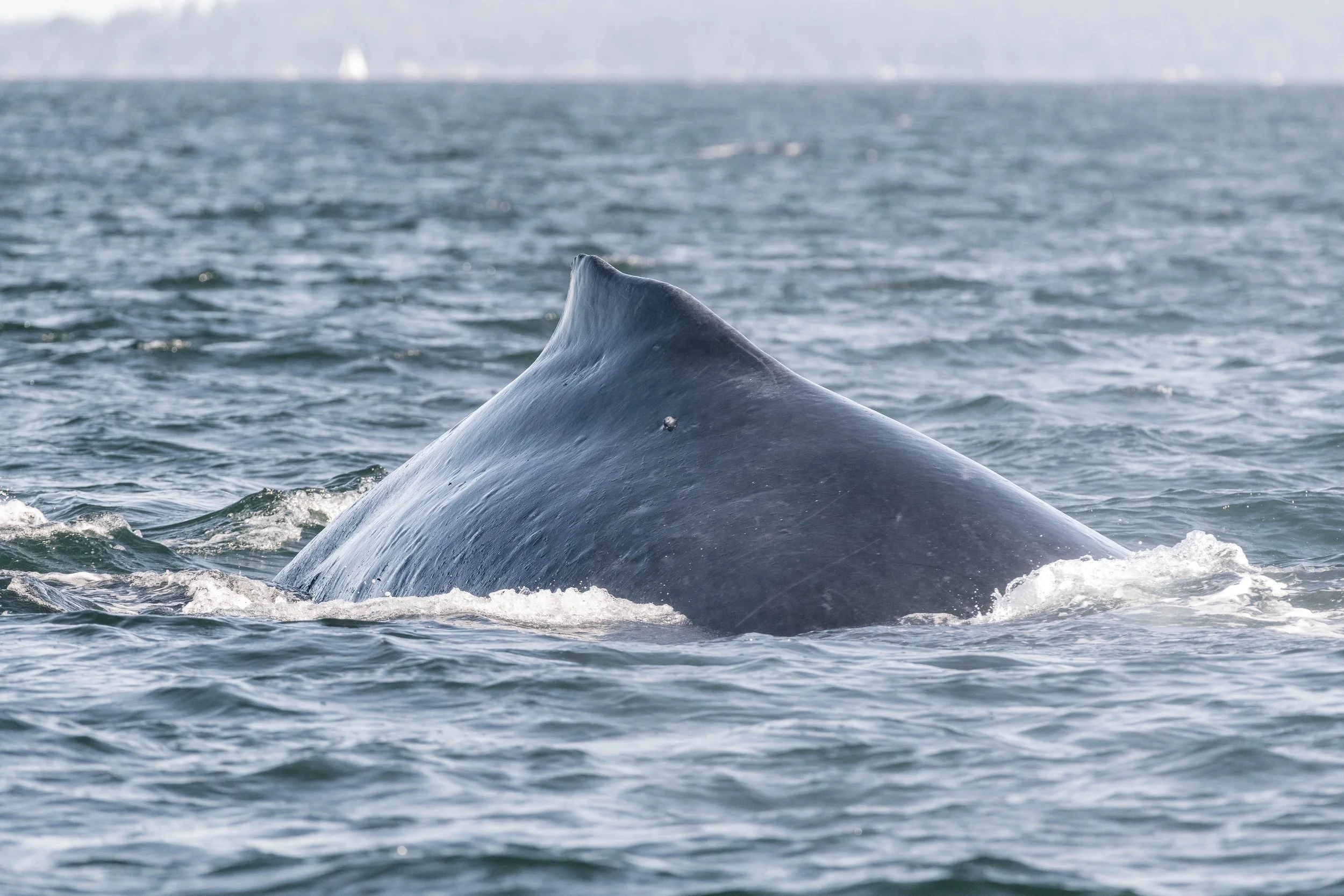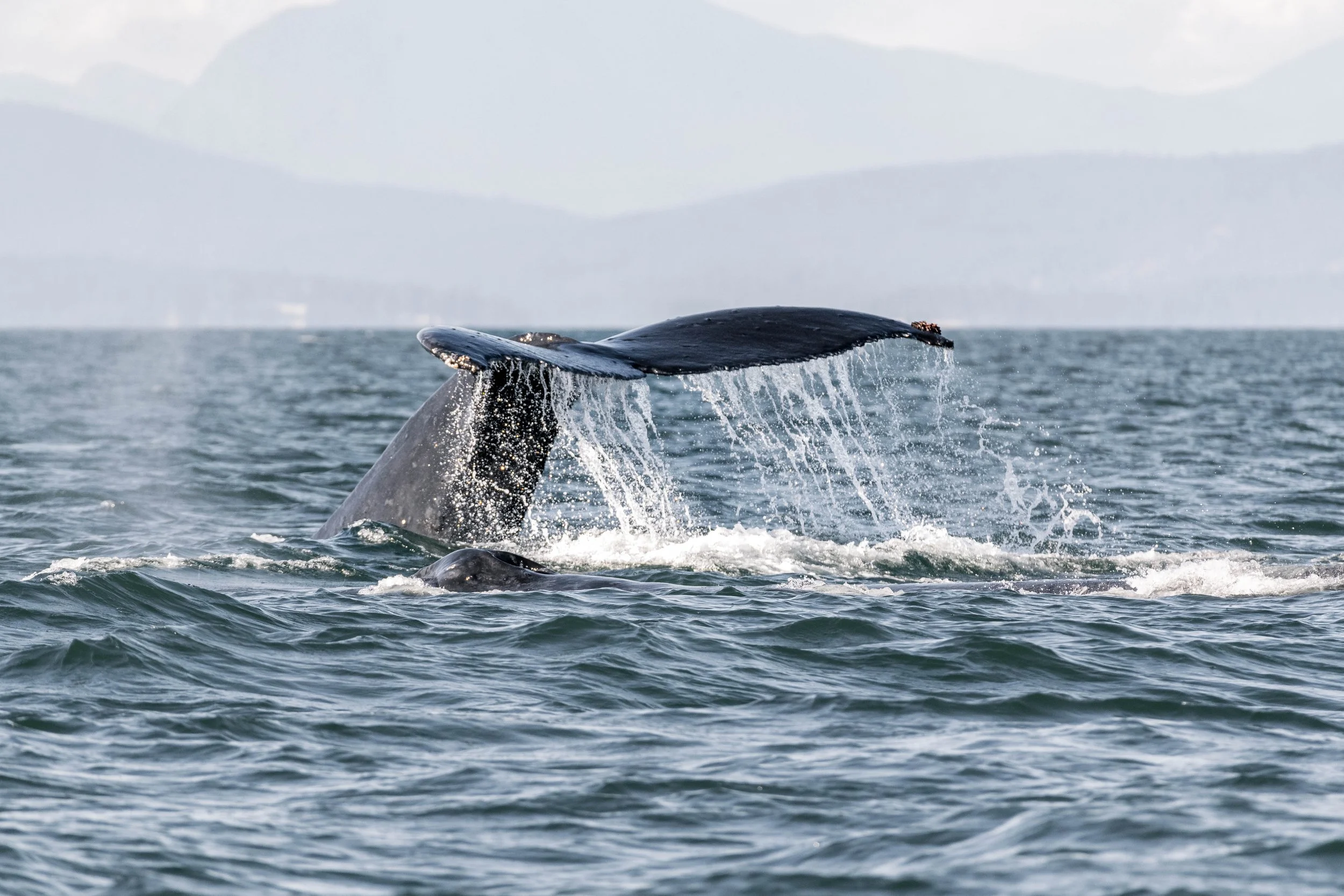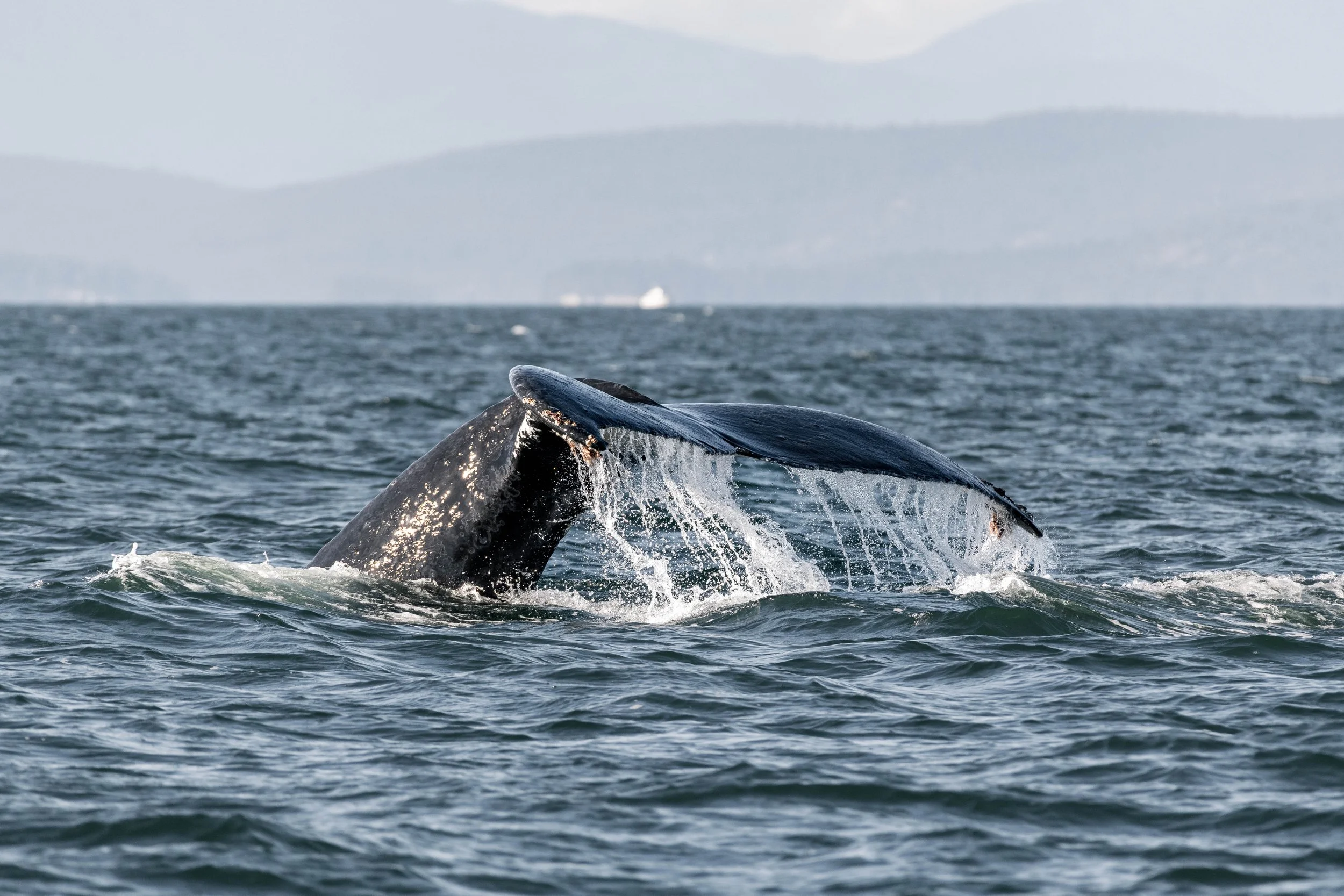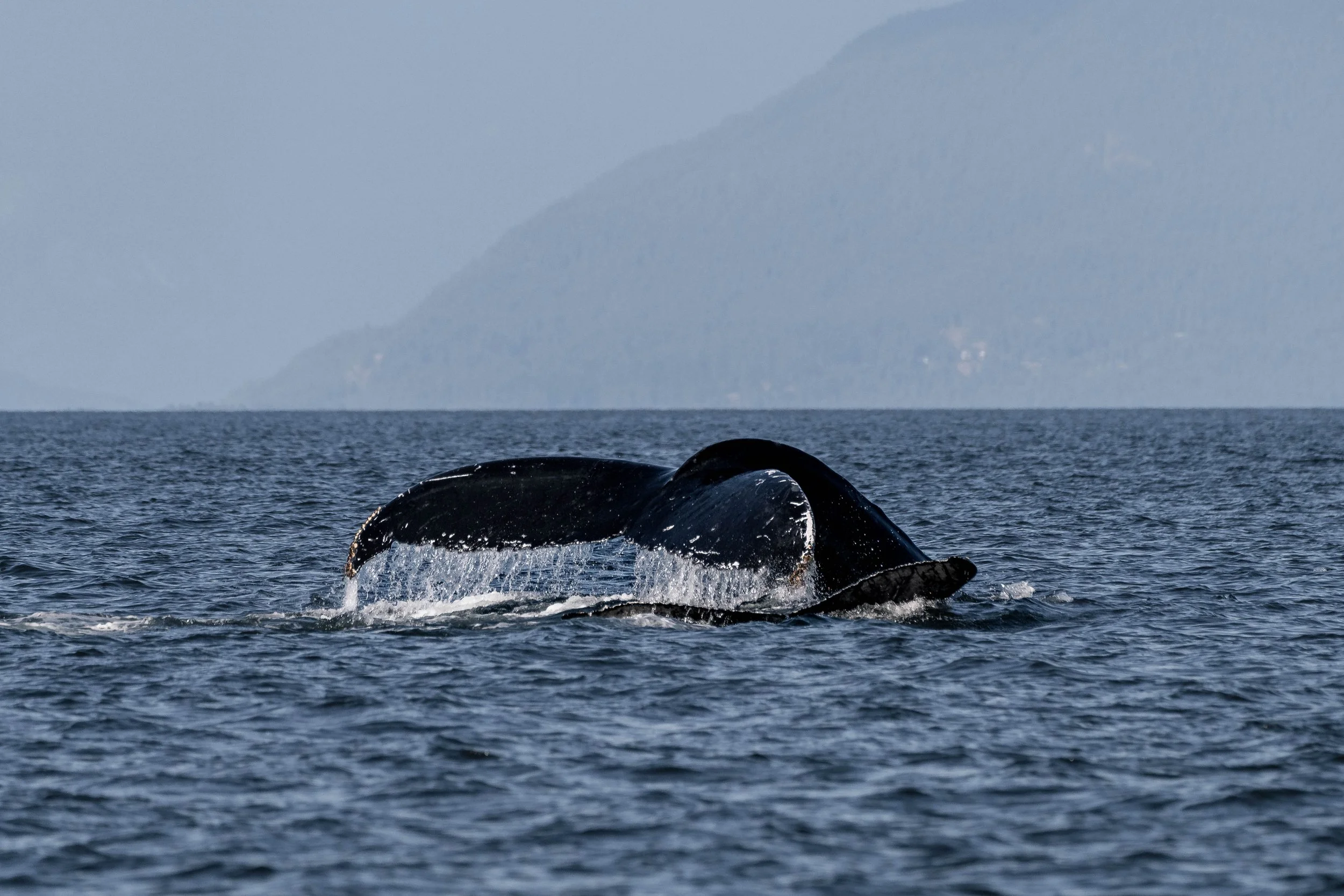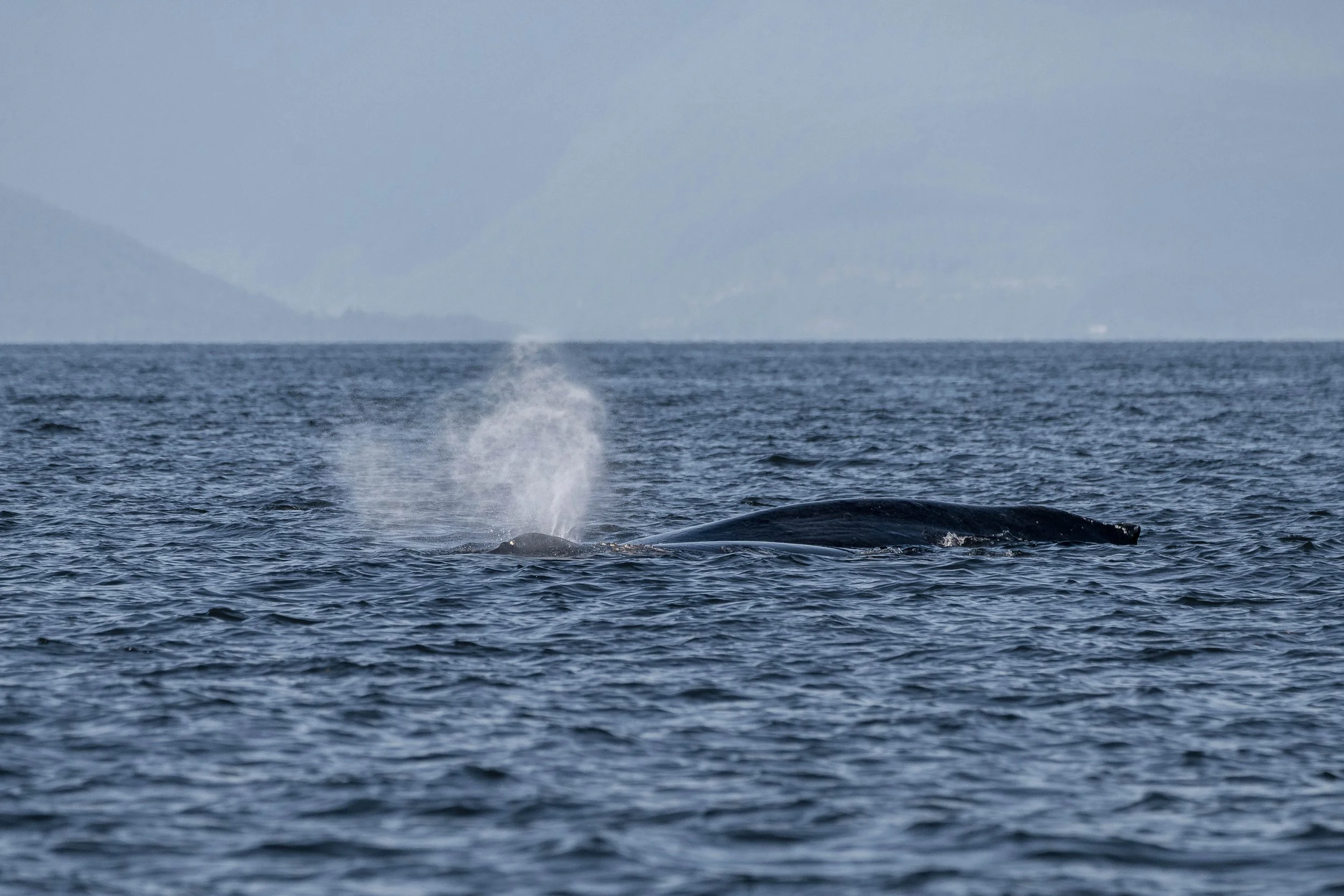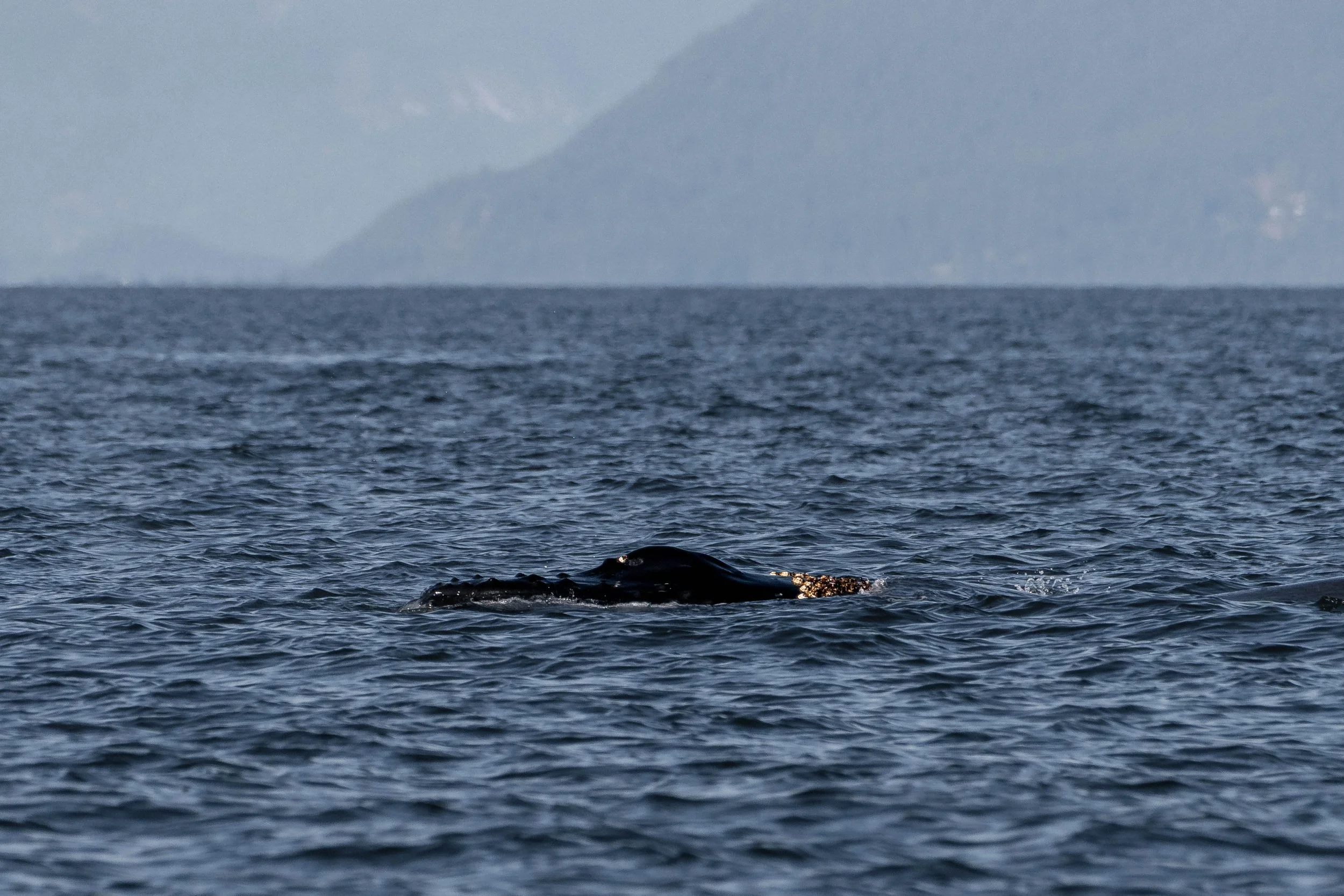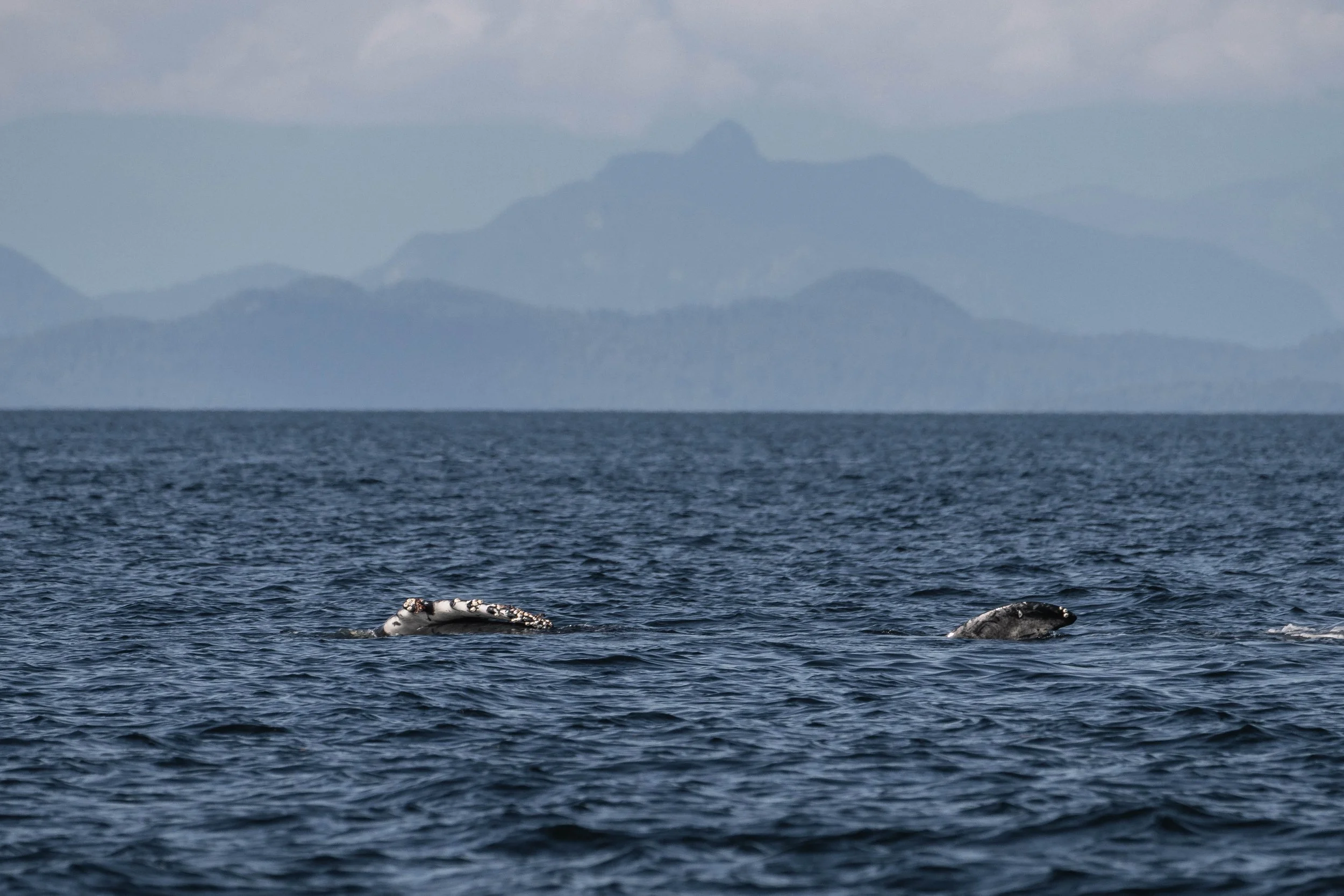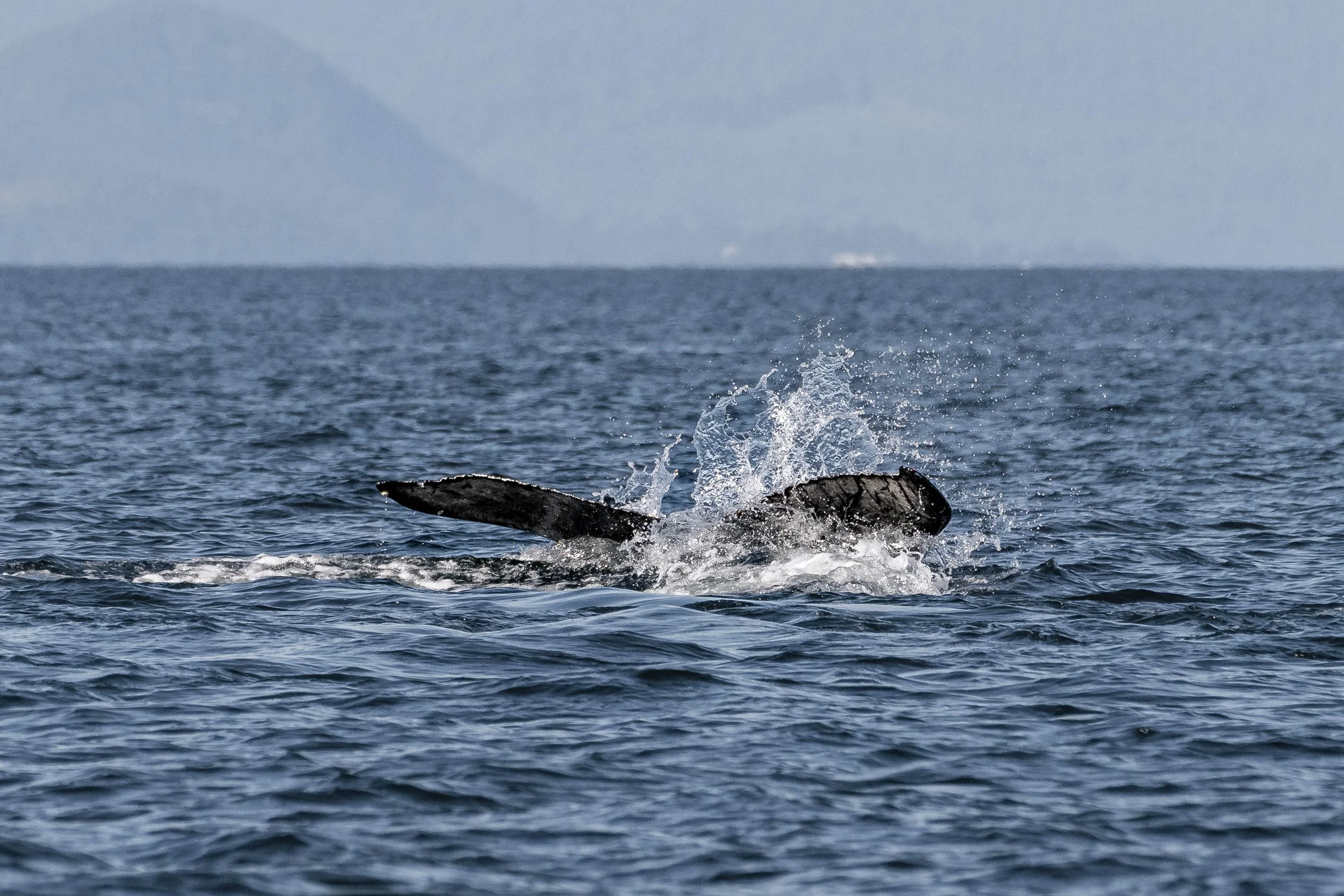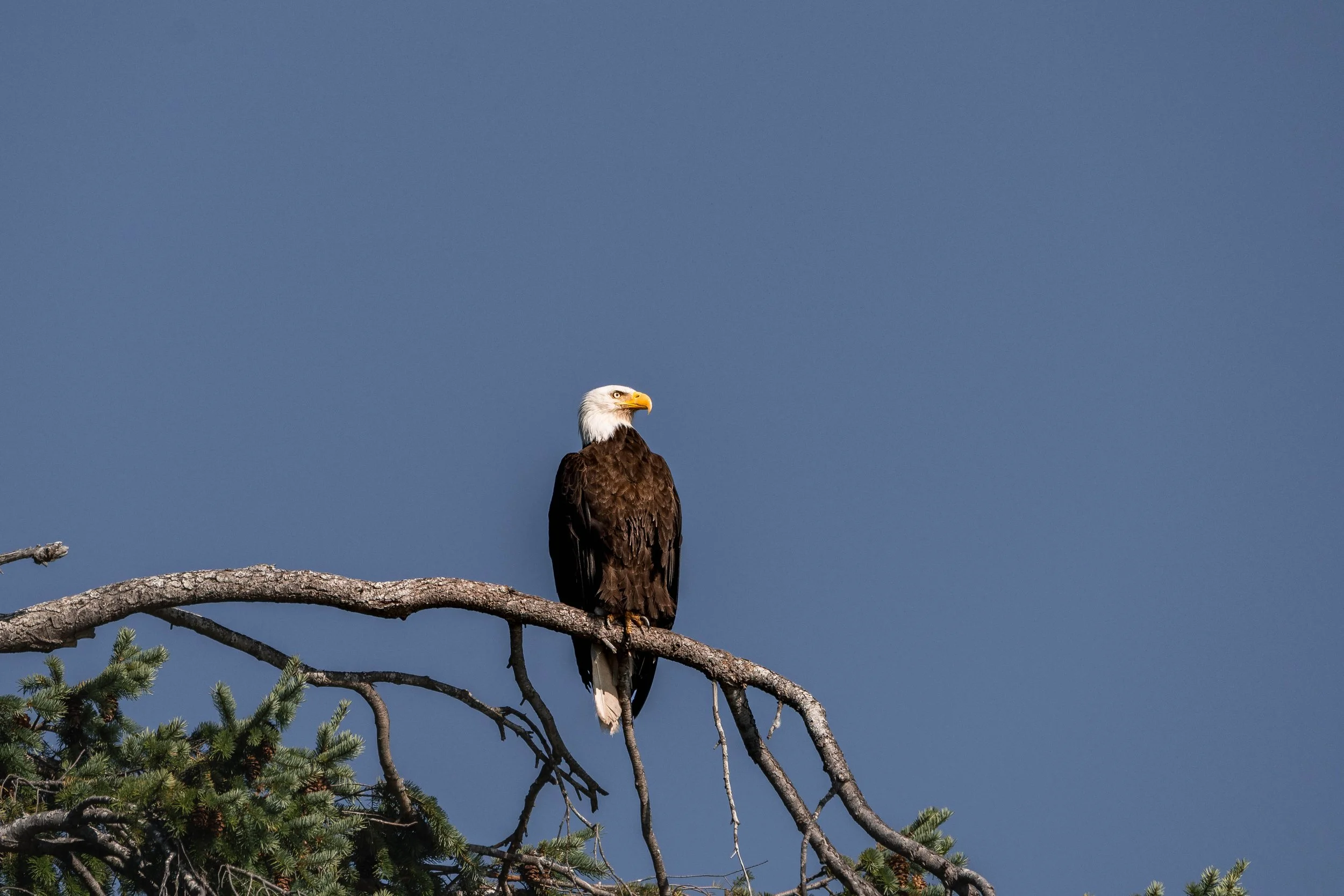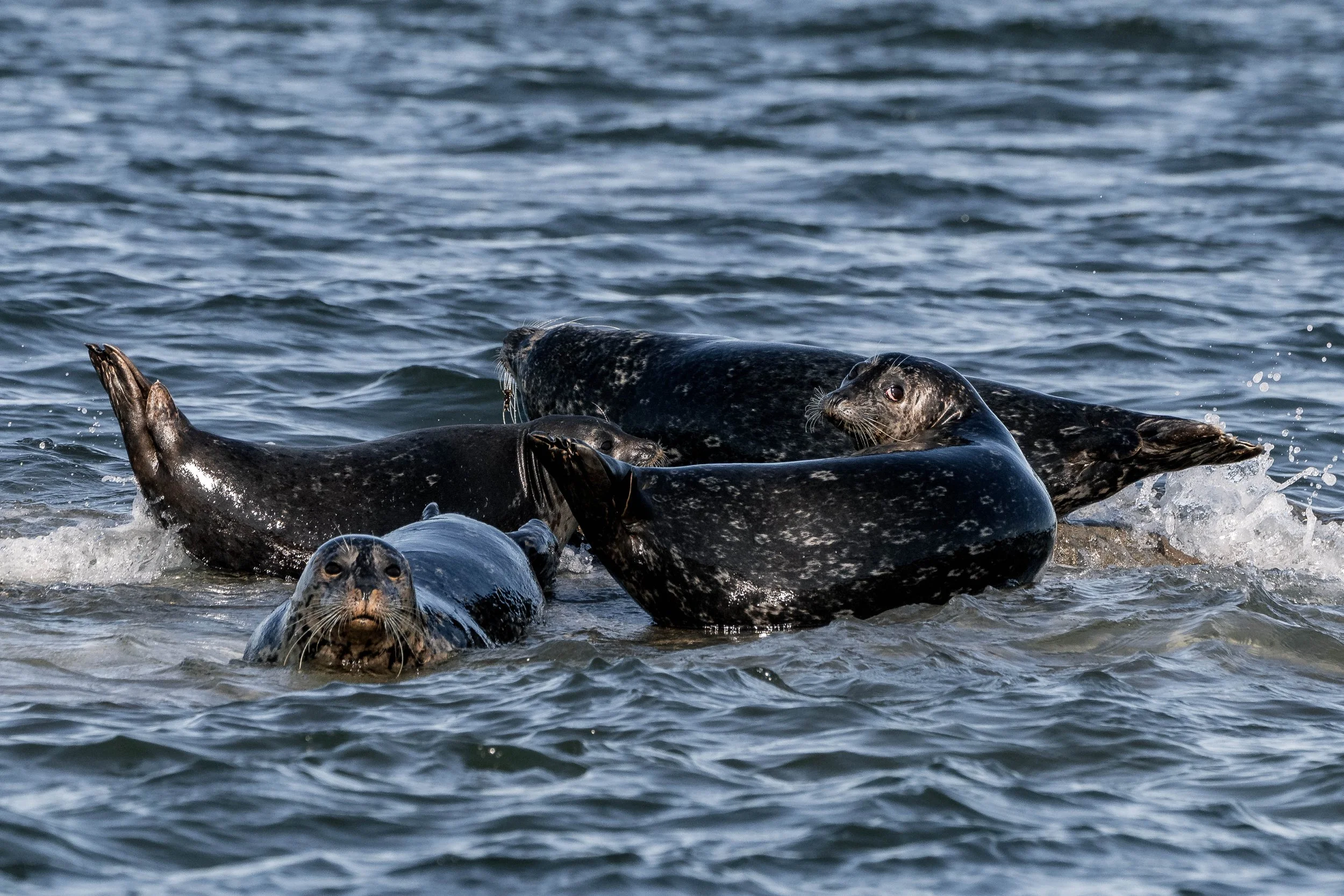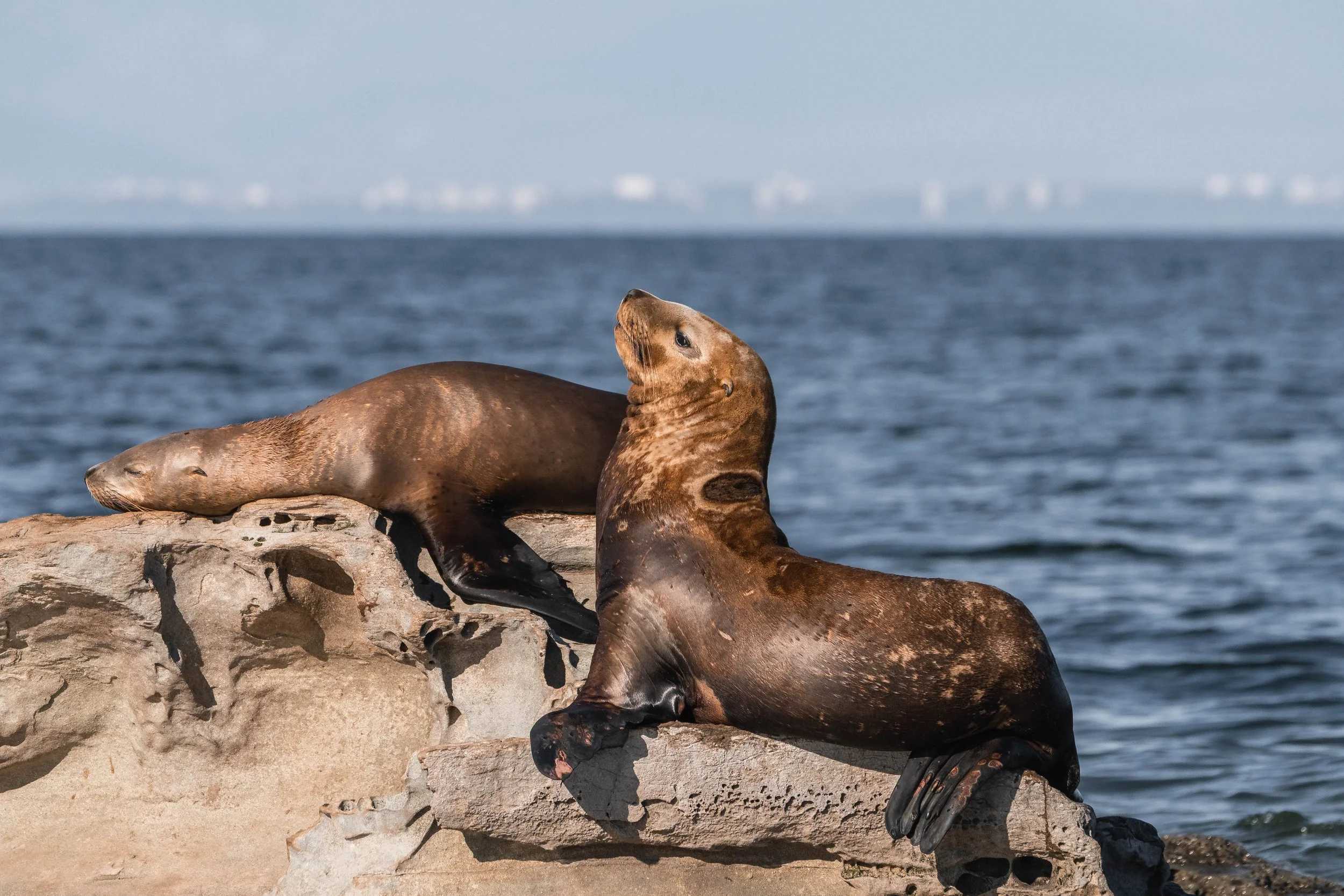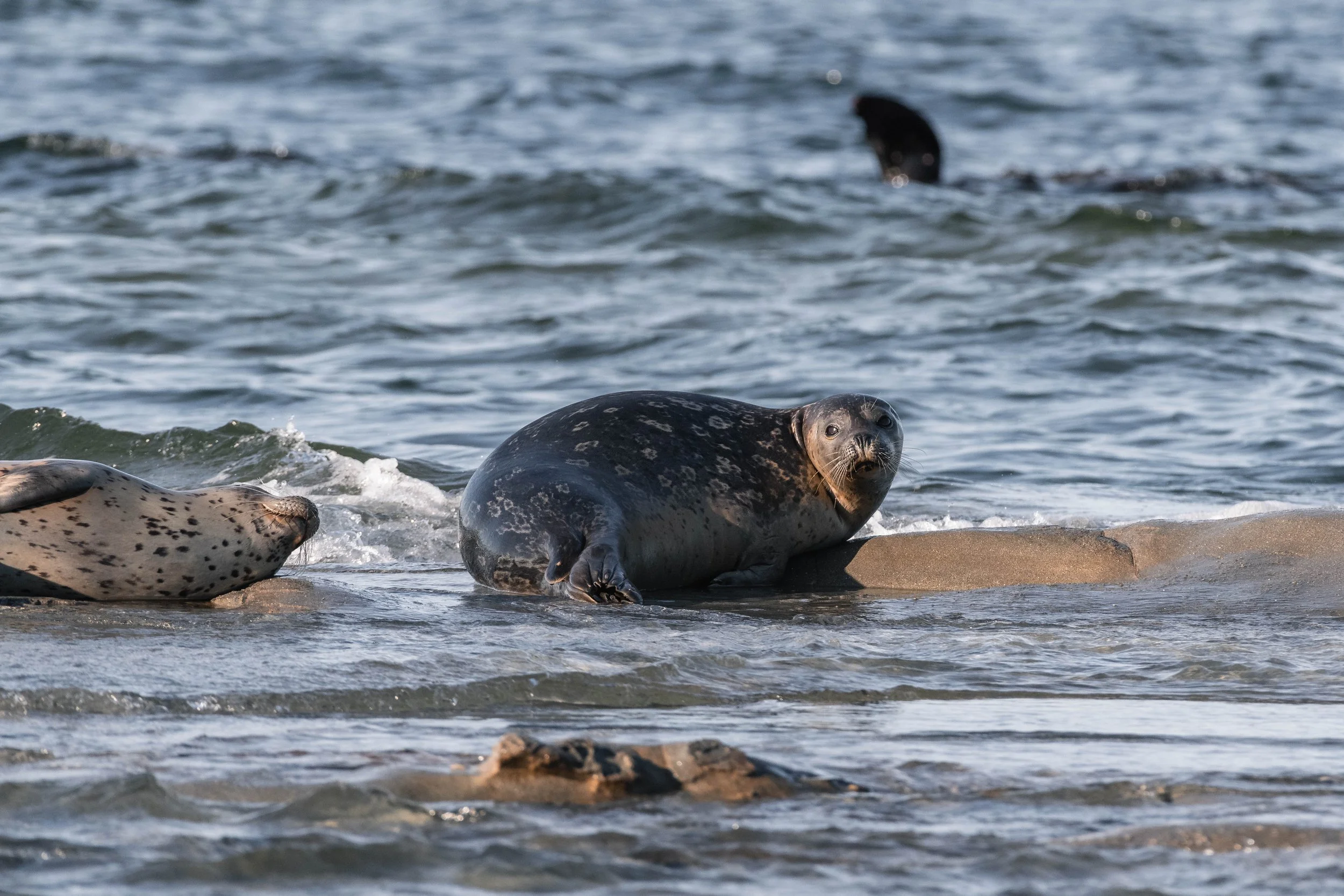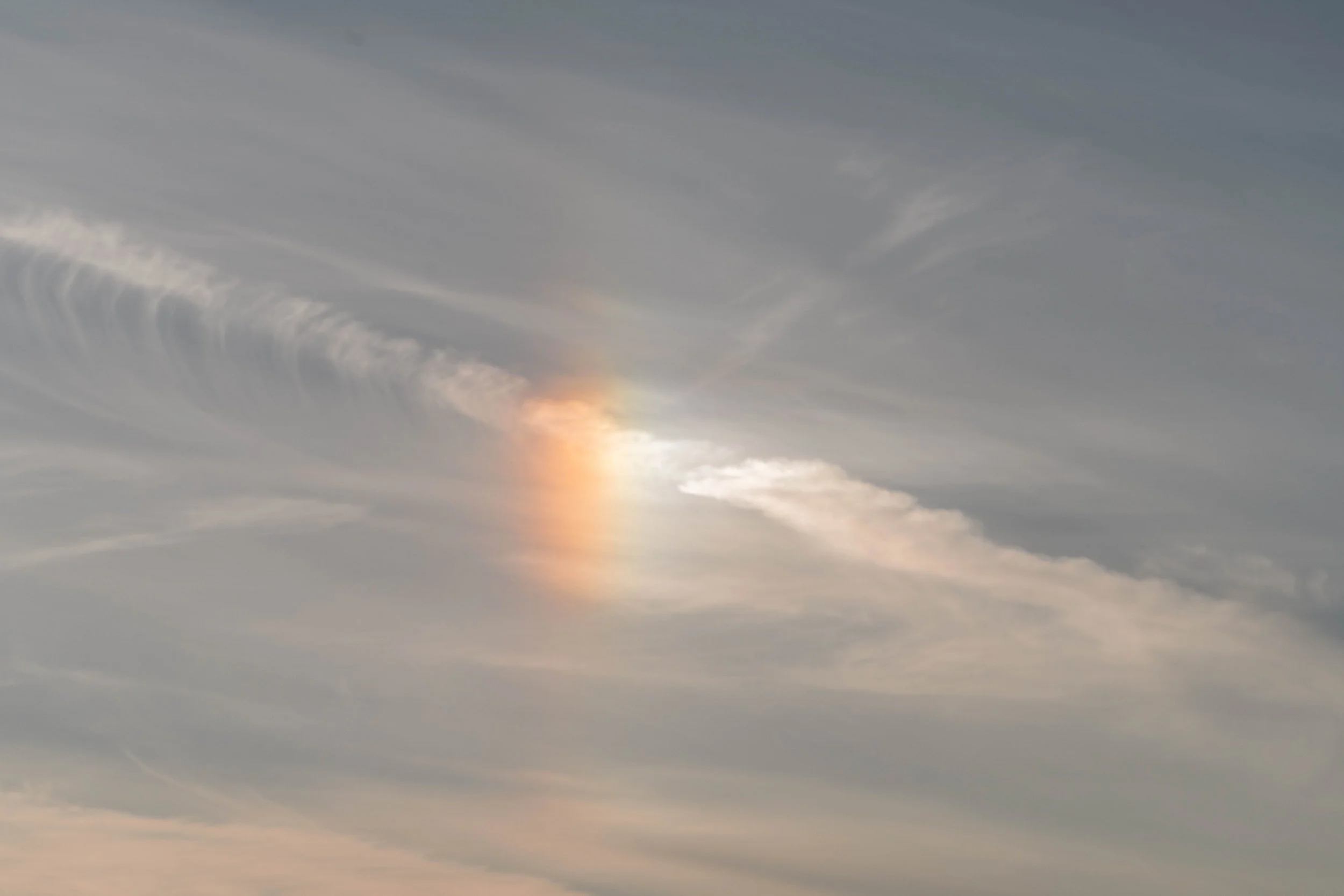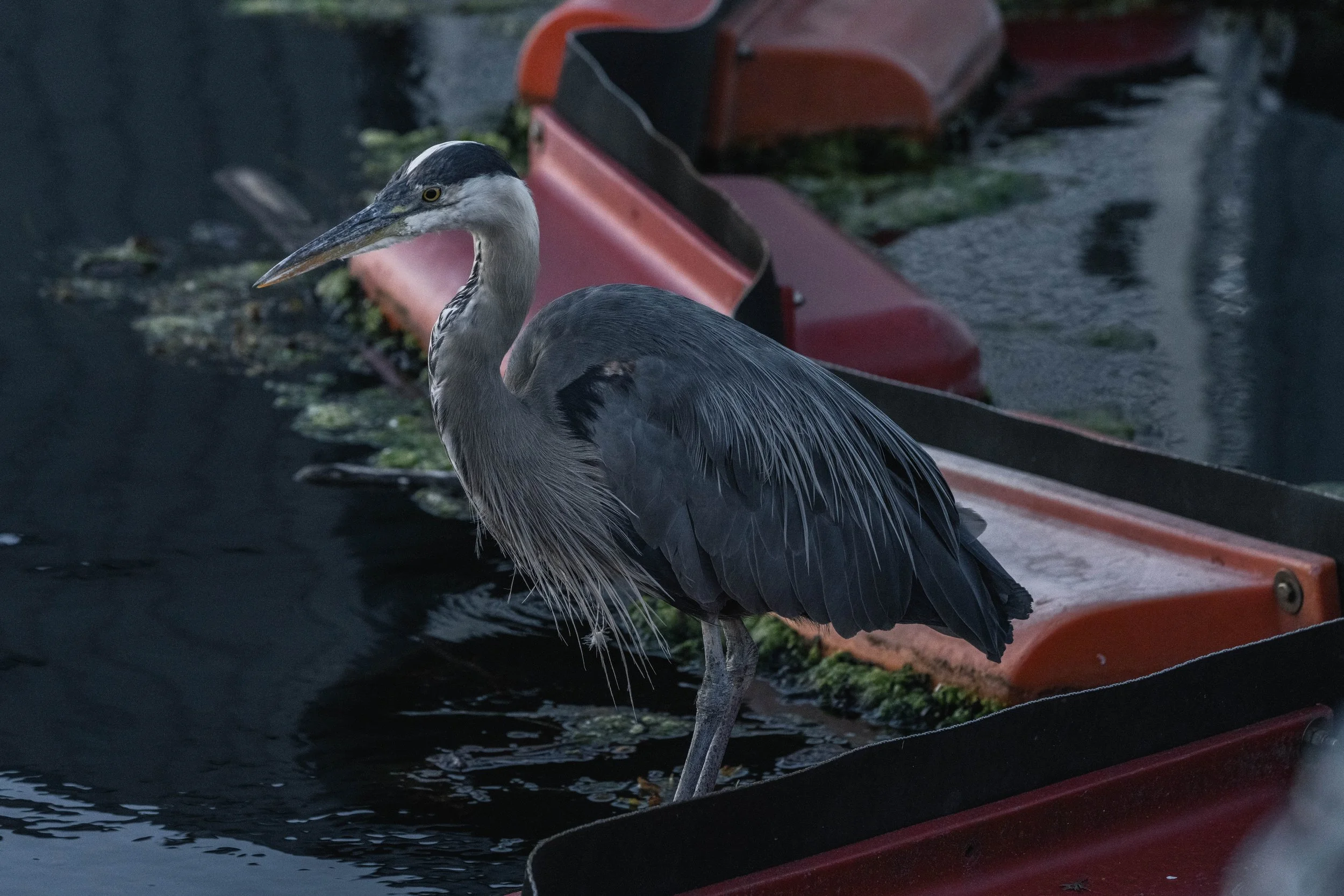August 7, 2025, 3:30 PM - Lunge Feeding Humpbacks
Another beautiful day greeted us for this afternoon; the sun was shining overhead, and the winds were calm, making a perfect storm for whale watching. We had all three of our vessels leaving Nanaimo, starting their search of the Salish Sea.
This time of year is one of our favourite times to be out on the water, thanks to the abundance of wildlife in the area. In particular, one of the two main species that we spot during our tours, the humpback whales, are most abundant in the summer months. Off the coast of British Columbia is one of the feeding grounds for the humpback whales. They return here each year from a long migration of over 6,000km, travelling from their breeding grounds in either Hawaii or Mexico. While they are down south, their primary source of energy comes from burning through their fat reserves that they build while spending their summer months here. The importance of that reserve is why they are so food-focused while they are here, spending anywhere between 18 and 20 hours of their day feeding.
Most of the time, this feeding happens below the surface, with the humpbacks opening up their massive mouths, giving a strong stroke of their tail, propelling them through their food in what’s known as Lunge Feeding! This is thought to be the most common feeding behaviour from our humpback whales in our waters, although there are a few others in the mix, such as trap feeding and flick feeding. Still, both of these are extremely rare. Although most of the feeding with the whales happens below the surface, on rare occasions, the whales will be chasing prey closer to the surface, lunging up out of the water in impressive shows of their size and power! This afternoon was one of these occasions, as we found a pair of humpback whales travelling together east of Nanaimo. As we were watching them, they suddenly erupted from the water, mouths open, their ventral pleats extended wide to accommodate the massive mouthful they had just taken! It was Twinning (BCX1207) and Geometry (BCZ0338)! As we watched them, these whales were feeding below the surface for the most part, occasionally lunging above, showing off their feeding prowess. Those ventral pleats are the key to the success of these giant filter feeders. They are fleshy folds in the humpback's skin that stretch from their chin down to their belly button, which expand greatly to accommodate massive mouthfuls, up to 20,000L at a time. They then push this water through the ~400 baleen plates that hang from the roof of their mouth, sieving out the delicious morsels that they just caught. Lucky for them, the ecosystem in the waters of BC is so rich that there is plenty of food for them to share!
It soon came time to leave these two, spreading out our boats to increase our chances of coming across something else. It seemed that this method worked out perfectly, as we ended up with two other encounters with humpback whales. One boat ended up finding a solo humpback, which was focused on feeding in the area: Squirrel/Smoke (BCX2183)! Unlike the first two, all this feeding was happening deeper in the water column. Humpbacks aren’t typically using the entire depth of the water column available to them; instead, their average dive depths are between 100 and 200 meters. At its deepest point, the Strait of Georgia is around 400 meters deep!
At the same time that they found a very hungry Squirrel/Smoke, the other boats found a mom and calf, Kappa (BCX0158) and Kappiroto (BCX0158 calf 2025). While Kappa was also focused on feeding, she seemed to be leaving her calf at the surface, with the calf rolling around and enjoying themselves a bit more than mom. It makes sense, since this calf will still be feeding on mom’s milk, so they are yet to know the hunger of the migration. It was great to watch the calf so care-free, but eventually we left these whales behind as well, continuing towards Valdes Island and Stinky Rock. Here we found all our pinnipeds for the day, including the large and loud Steller Sea Lions, and the smaller, calmer Harbour seals.
There was still more in store after this land-based sighting, though, as another mom and calf were spotted on the way home by two of our boats: Valiant (BCX1773) with her calf (BCX1773calf2025)! This was another example of a mother leaving her calf at the surface as they continued to feed without them, and another example of a calf with a bit of extra energy thanks to their mom’s super-rich milk. It was great watching the playful antics of the young whale before it was time to leave them behind.
The boats aimed back towards the Harbour, pleased with all the wildlife that was spotted throughout the trip, although it seemed that this wasn’t the last of the excitement for one vessel. They had one more humpback encounter in store, when another humpback whale popped up alongside them. They stopped long enough to determine that this whale was Watson/Cerulean (BCY1461). It was a great end to the day!
Please enjoy all the photos included below from the day, captured throughout the trip by Marine Naturalists Val Watson, Cheyenne Brewster, and Aly Kohlman.
Twinning and Geometry
Geometry (left) and Twinning (right) preparing to dive together. Photo by Val Watson.
Twinning (left) and Geometry (right) lunge feeding together. Photo by Val Watson.
You can see the water spilling out of Twinning’s mouth with Geometry beside them. Photo by Val Watson.
Geometry showing off his underside. With these photos we know he is a male! Photo by Val Watson.
From this photo we can confirm that Geometry is a male! Photo by Aly Kohlman.
A beautiful fluke waterfall from Twinning. Photo by Val Watson.
A fluke waterfall from Geometry. Photo by Val Watson.
Geometry lunging at the surface with Twinning just behind him. Photo by Val Watson.
A great look at the ventral grooves of Geometry. Photo by Val Watson.
Twinning being showered in his own blow. Photo by Val Watson.
A fluke waterfall from Twinning. Photo by Val Watson.
A beautiful lunge from Geometry. Photo by Val Watson.
Geometry going for a dive. Photo by Cheyenne Brewster.
Twinning lifting their tail to dive with Geometry surfacing beside him. Photo by Cheyenne Brewster.
The beautiful white undersideof Geometry’s tail. Photo by Cheyenne Brewster.
Geometry with his pectoral fin in the air. Photo by Aly Kohlman.
Twinning’s drsal surface. Photo by Aly Kohlman.
Twinning going for a dive. Photo by Aly Kohlman.
Geometry diving beside Twinning. Photo by Aly Kohlman.
The underside of Twinning’s tail. Photo by Aly Kohlman.
Twinning diving with Geometry’s nostrils just beside them. Photo by Aly Kohlman.
A fluke waterfall from Geometry. Photo by Aly Kohlman.
The lovely underside of Geometry’s tail. Photo by Aly Kohlman.
Squirrel/Smoke
Squirrel/smoke going for a dive. Photo by Cheyenne Brewster.
Kappa and calf
A fluke waterfall from Kappa as her calf flukes beside her. Photo by Val Watson.
A cute little blow from Kappa’s calf. Photo by Val Watson.
Kappa’s calf lifting their rostrum. Photo by Val Watson.
Kappa’s calf lifting their pectoral fin. Photo by Val Watson.
The calf swimming on their side. Photo by Val Watson.
The underside of Kappa’s calf fluke. Photo by Val Watson.
Kappa going for a dive. Photo by Aly Kohlman.
The underside of Kappa’s calf’s fluke. Photo by Aly Kohlman.
Kappa (left) diving with her calf on the right. Photo by Aly Kohlman.
Kappa going down for a dive with her calf diving beside her. Photo by Aly Kohlman.
Other Wildlife
A bald eagle watching from the treetop. Photo by Val Watson.
A bald eagle on Entrance Island. Photo by Aly Kohlman.
Cute little Harbour Seals. Photo by Val Watson.
Steller Sea Lions spending time on the rocks at Stinky. Photo by Val Watson.
Kissing Sea Lions. Photo by Cheyenne Brewster.
Fighting Steller Sea Lions at Stinky Rock. Photo by Aly Kohlman.
Steller Sea Lions swimming through the waves. Photo by Aly Kohlman.
Black Turnstone on the shores of Stinky Rock. Photo by Aly Kohlman.
A cute little Steller Sea Lion basking in the sun. Photo by Aly Kohlman.
A curious Harbour Seal watching from the rocks. Photo by Aly Kohlman.
Valiant and Calf
A littl fluke from Valiant’s calf. Photo by Val Watson.
Valiant’s calf fluke. Photo by Val Watson.
Watson/Cerulean
The lovely underside of Watson’s tail. Photo by Val Watson.
Rainbow in the clouds. Photo by Val Watson.
Great blue heron at the docks after the tour. Photo by Val Watson.


